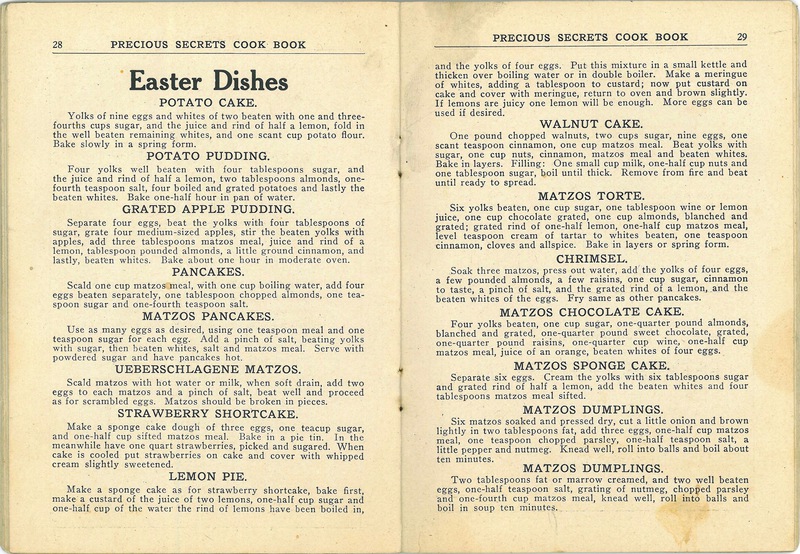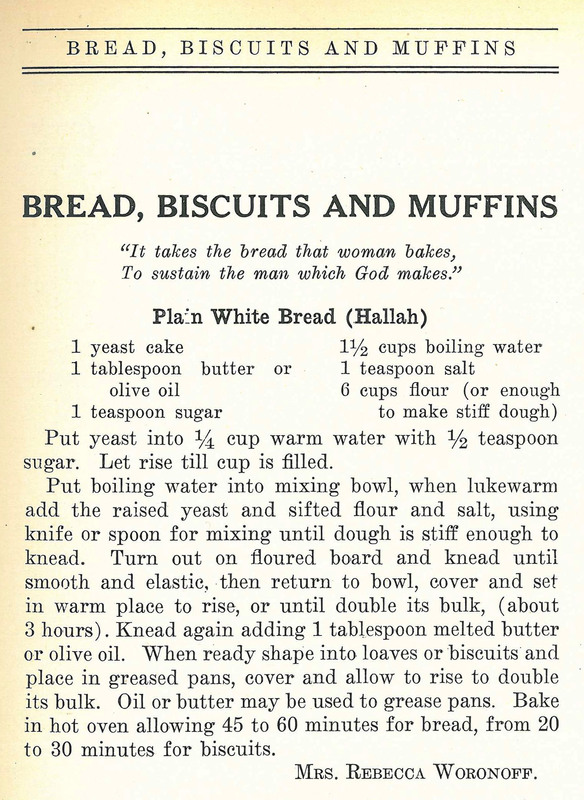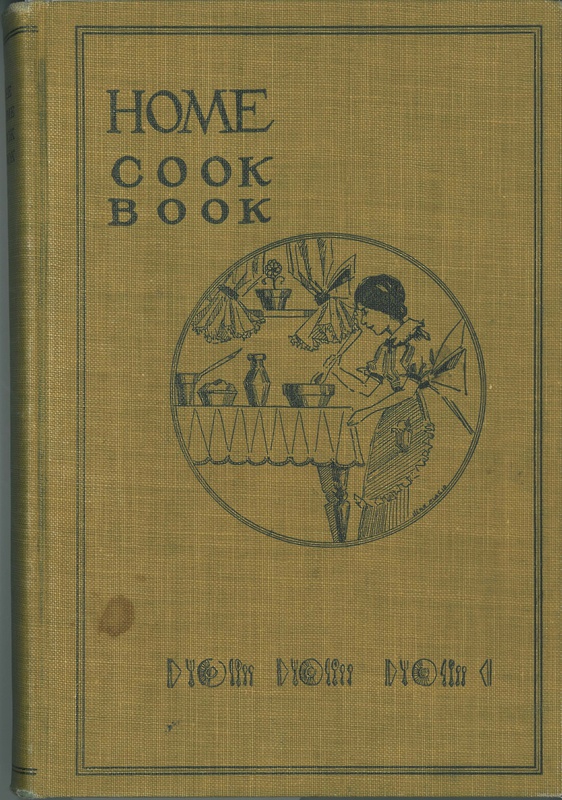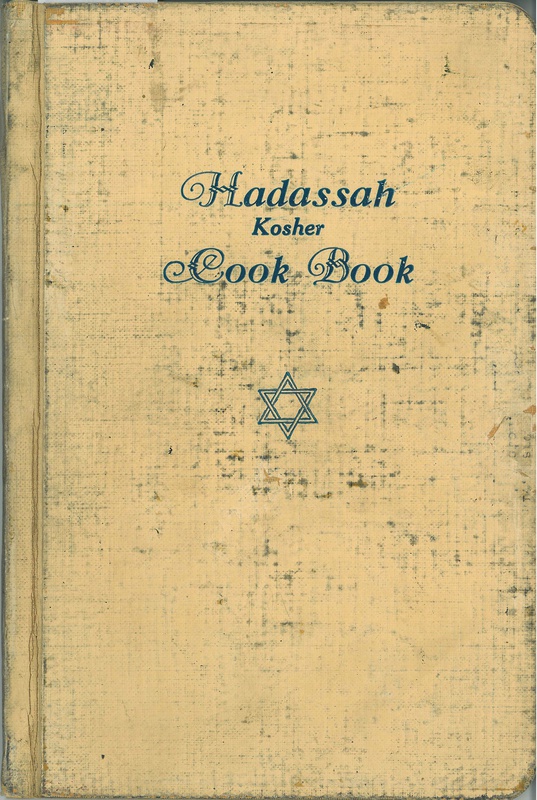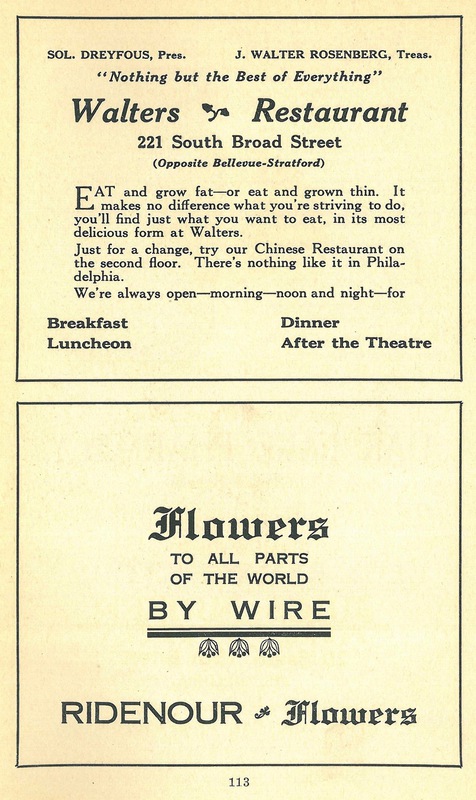The Golden Twenties
Precious Secrets
This small and fragile item is a rare survivor. We imagine many of the early charity cookbooks to have been printed on similar materials, which is why they are so hard to find. Like Aunt Babette's, and others of this era, the Passover dishes are listed as Easter recipes.
Coming to the end of the largest era of Jewish immigration to America, this cookbook, like many others in the pioneering years, tried to orient these new immigrants to America. In using English (i.e. Easter) and not Yiddish terms (i.e. Pesach), these cookbooks helped assimilate and Anglicize immigrant Jews.
Our Friends' Recipes
This rare item does not have very many Jewish references. However, there are eight distinctly Jewish recipes, including "Mohn Kipfel" and Purim Kusselich." No affiliation (religious, institutional, or other) is listed.
The Center Table
This cookbook comes from one of Boston's oldest congregations, Temple Mishkan Tefila.
One of the more interesting items in this cookbook is the first recipe in the bread section, which is for a "Plain White Bread" that is parenthetically understood to be "hallah," the traditional Ashkenazi egg-bread baked for holidays. This recipe calls for no egg, a scant amount of sugar, and a small amount of shortening (which the recipe encourages to be "butter"). Furthermore, instead of warm water to proof the yeast, the recipe calls for boiling water, which can kill the yeast and prevent the dough from rising if one does not read the recipe appropriately. This recipe is a very economical recipe that would do well for families who would be unable to obtain enough eggs, sugar, and shortening for a more traditional holiday loaf.
Vegetarian Cook Book (Vegetarisher Kokh Bukh)
This Yiddish-language cookbook was published by The Better Health & Correct Eating Institute of New York, a non-profit charity of which little is known. This is the second known Yiddish-language book that was published by them, the other being more of a nutritional guide (which is also in the JBLCA).
Like many Yiddish-language books of the era, many of the recipes are titled with Yiddish transliterations. Also included in this book are advertisements for American foodstuffs in both English and Yiddish. In reaching out to a Yiddish-speaking market, these food purveyors were hoping to capitalize on this new consumer-base. There are advertisements for Kellogg's Protose and Savita, as well as Marshak's Maltomilk, and local bakeries, to name a few.
The Home Cook Book
In addition to Jewish recipes, there are many local ads of interest in this book. It includes an advertisement for Weintraub's, the most popular delicatessen in Worcester at that time.
Hadassah Kosher Cook Book
This cookbook is a beautiful example of the importance of charity and community, with a full page explaining the history and accomplishments of Hadassah efforts as well as full recognition of the cookbook committee, who donated not just their recipes, but also their time and energy to make a difference with Hadassah.
Favorite Recipes [Philadelphia Cook Book]
This non-kosher charity cookbook has a very interesting ad inviting people to enjoy the market and restaurant on the street level, as well as the upstairs Chinese restaurant, which were located three doors down from a delicatessen.
If you click on the cookbook image, you will be able to see a street scene from the 200 block of South Broad Street in Philadelphia (courtesy of the Philadelphia City Archive). This image, from the same year this book was published, is a rare and beautiful representation of the ethnically diverse neighborhoods in early 20th century America.
Another interesting element of this cookbook is the stark difference between the cover and book title. As one can see on the image to the right, this cookbook is the Philadelphia Cook Book. However, upon opening the book, the title page presents this book as Favorite Recipes. Many early charity cookbooks used similar titles like "favorite recipes" as their titles, so the distinct hardcover title could be a way for the community to distinguish this book, a book of "favorite recipes" from a Philadelphia community, from other cookbooks.

Pioneers: the Second Generation

